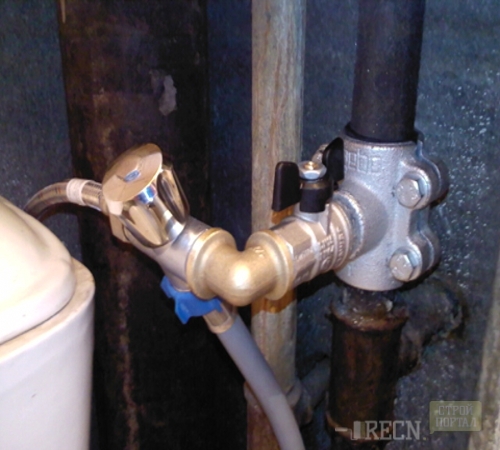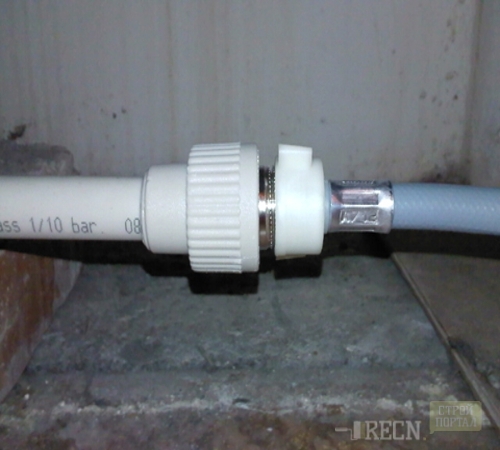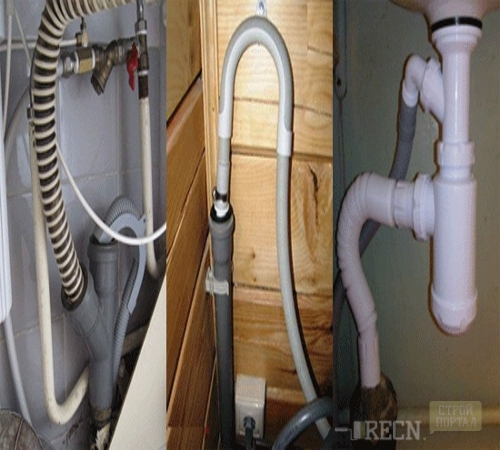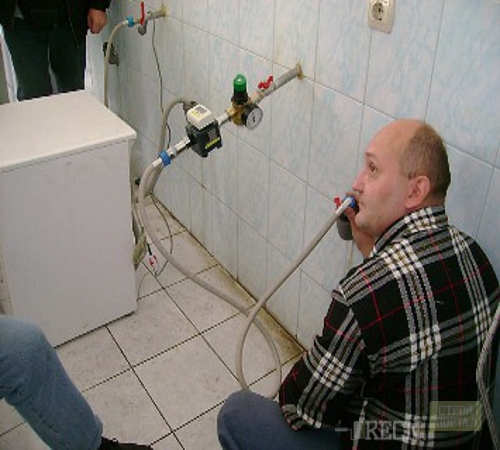
How to connect a washing machine to sewage Useful advice,Plumbing
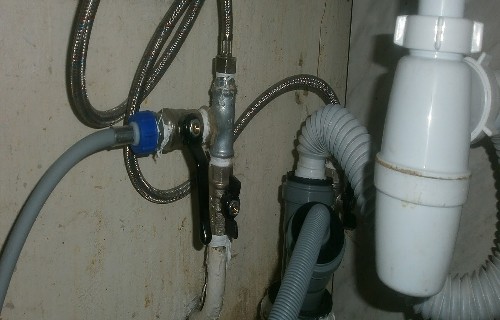
Installation of the washing machine is a very painstaking, high-tech process that requires compliance with clear rules. Following the instruction will avoid unwanted vibration, protect the electrical strokes from the voltage drop and ensure high-quality circulation of water in the system. The correct connection of the washing machine will extend the service life and will provide better wash.
Content
Washing Machine Connection Scheme
The process of installing a washing machine consists of four stages:
- preparatory,
- water connection
- connecting drainage,
- installing the case.
It is important to perform each of them consistently, since non-compliance with technology will lead to a violation of structural elements, as a result - arbitrary disconnection of the sewer hose or poor water supply.
Preparatory process
Before you start any work, you need to prepare a tool. To independently connect the washing machine, you will need:
- adjustable key (2 pcs.),
- building Fuma,
- set of rubber pads (if not included),
- a set of metal transition fittings (if there is no place to connect water),
- a set of plastic transition fittings (if there is no place for drainage in the sewage),
- boat
- scissors for metal-plastic pipes (if installed),
- bulgarian (if metal pipes),
- solid soap.
Next, it is necessary to study the technical characteristics of the washer. As a rule, the power of such devices begins from 1 kW, such a load is large for any power grid. If you simultaneously include, allow, electrocamine, kettle, or any other device that sweeps the total load on the network to 3 kW and more, the automata shutdown. But, if they are not provided or designed for 16 A, a short circuit will occur, as a result, the technique has incorporated at the moment, the technique is likely to burn.
In order to avoid this, some manufacturer put internal voltage stabilizers that align network oscillations and protect against closures. If your machine does not have such a device, you must correctly connect the engine of the washing machine. To do this, it is enough to buy an external stabilizer. It is inserted into the outlet, and the cable from the washing machine is connected directly to it. Naturally, this device will not allow the entire electrical engineering at the same time, but will fight it from breakdown.
Connecting flow water
Connecting a washing machine to the water supply starts with inspection of the tap pipe. After repairing plumbing, as a rule, leave a special discharge to connect the washer. But it is not always possible, firstly, the plumbing pipes could not change, and secondly, the location planned location could change. Make a new dressing is not difficult.
If plastic pipes, the order of action, the following:
- turn off the water supply to the house or apartment, pull it out of the pipes,
- easy the length of the Washing Machine Water Hose,
- measure this distance to the plumbing pipe,
- cut the pipe
- with the help of fittings to collect corner,
- extend it with a piece of plastic pipe at least 10 cm,
- install a tap pipe from above,
- turn on the water and check for leaks,
- disable water.
If the pipes are metallic, the algorithm of actions is the same. Only in the places of cutting the pipe will need to make an exterior thread with the help of threads for pipes. Threaded, in front of the fitting, the fuma in 3-4 layers is wound.
It is logical about the technical question, - how to screw the remaining part of the pipe to the corner? To do this, cut off another non-large piece (at least 10 cm), and fasten it. Two smooth pipes are bonded using special fittings, it is necessary to cut the thread for the metal, both soldering and metal analogs are suitable for plastic.
As soon as the removal is ready, we connect the washing machine hose to it:
- wound on the thread
- tightly screw the hose to the removal (one key hold the underwater crane, and twist to the other),
- crane do not open.
A simpler, but less reliable option - the use of an ordinary coupling.
Connecting water to the washing machine is over. For proper washing, it is necessary to connect exclusively cold water. Washing machine, connected to hot water, firstly, it will not work correctly and the heating element will be faster (the automation is calculated for a specific program, if some of the program parameters does not match, at best, the wash will turn off), secondly It will not happen expected economy of electricity, as it is necessary to launch several times.
Methods for connecting a washing machine to sewer
There are only two options:
- direct connection
- outdoor.
Under the direct connection it is necessary to understand the fixation of the drainage hose in the sewer tube. This is quite painstaking work and its implementation is advisable when the washing machine is designed for 6 or more liters, and the washing is carried out at least two times a day.
The technology is similar to the removal installation, the exception that instead of the crane uses the rubber gasket system.
- A special cap is dressed on the underwater tube, which is made of drawn rubber and has a narrowed hole.
- It is inserted with a drainage hose from the washing machine (at least 8-10 cm),
- Rubber reliably fixes the hose in the sewer tube, as a result, even at high pressure, the possibility of leakage is eliminated.
The difficulties consist in the fact that it is difficult to find such caps, especially on a small diameter of pipes.
Outdoor connection of the washing machine automatic up to 6 kg is carried out without any additional fixators and fuses. It is important to remember that the drainage hose must enter the sewer tube as close to the direct corner.
Installation of housing
The latter, but perhaps the most important point is to install the most washing machine. For this work, there are irregular rules:
- perfectly smooth surface
- the presence of a minimum free space around the housing (at least 0.5 cm).
The legs of the washing machine should be aligned so that it does not rushed at all. Concote them to the floor - a bad idea. Permanent vibration will destroy not only the fill near the washer, but also a few meters around the perimeter, undermining the tile or destroying the base of the floor. In addition, in panel houses, such a procedure will lead to the fact that at the time of washing the neighbors under you will be stagged with chandeliers.
The legs are aligned not only at the bottom, but also with special tighters, which are located on the back of the washing machine. As a rule, they are configured in the store, but does not interfere with the personally. Tightening should be firmly stretched. This means that they are fixed. In various types of washing machines, tightening are either adjustable using a wrench or a special lever.
Connecting the washing machine in the bathroom or in the kitchen does not differ among themselves. Naturally, the kitchen is hiding in the furniture. In order to avoid vibration, from the bottom, in the middle and on top of the side walls of the washing machine to the furniture fasten the special durable rubber gaskets. They absorb vibration and reduce it.





